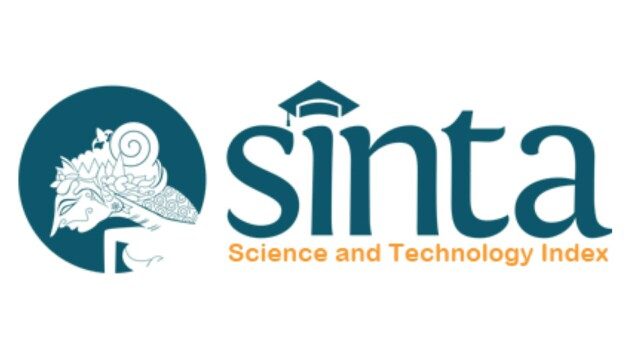Pemanfaatan Metode CNN Menggunakan Arsitektur Alexnet untuk Peningkatan Kinerja Klasifikasi Penyakit Daun Tomat
Sari
Tomat adalah salah satu komoditas hortikultura dengan nilai ekonomi yang tinggi, tantang yang dihadapi oleh petani salah satunya dalah kerentanan penyakit tomat terhadap penyakit. Identifikasi secara visual pada daun sulit diuraikan dengan sekali pandang, sehingga menyebabkan asumsi yang tidak akurat tentang penyakit tersebut. Akibatnya, mekanisme pencegahan yang dilakukan petani menjadi tidak efektif dan berdampak merugikan. Penelitian ini mengusulkan identifikasi penyakit tomat secara automatis menggunakan metode Convolution Neural Network. Dalam makalah ini kami melakukan evaluasi pada metode CNN dengan arsitektur Alexnet dengan konfigurasi layer untuk mencari hasil kinerja terbaik dari penggunaan parameter tersebut pada architektur Alexnet. Pada penelitian ini juga melakukan analisis yang diperoleh dari hubungan antara parameter yang digunakan terhadap kinerja akurasi, dan analisis terhadap dampak penggunaan parameter dengan jumlah dataset daun tomat dari dataset PlantVillage.
Kata Kunci
Teks Lengkap:
PDFReferensi
[1] E. C. Miller, C. W. Hadley, S. J. Schwartz, J. W. Erdman, T. W. M. Boileau, and S. K. Clinton, “Lycopene, tomato products, and prostate cancer prevention. Have we established causality?,” Pure and Applied Chemistry, vol. 74, no. 8, pp. 1435–1441, 2002, doi: 10.1351/pac200274081435.
[2] M. J. Stout, H. Kurabchew, and G. L. D. Leite, Host-Plant Resistance in Tomato. Elsevier Inc., 2017. doi: 10.1016/B978-0-12-802441-6.00009-7.
[3] E. A. Curl, “Control Of Plant Diseases By Crop Rotation,” The Botanical Review, vol. 29, no. 4, 1963, doi: sci-hub.tw/10.2307/4353677.
[4] P. Tm, A. Pranathi, K. Sai Ashritha, N. B. Chittaragi, and S. G. Koolagudi, “Tomato Leaf Disease Detection Using Convolutional Neural Networks,” in 2018 Eleventh International Conference on Contemporary Computing (IC3), IEEE, Aug. 2018, pp. 1–5. doi: 10.1109/IC3.2018.8530532.
[5] R. A. Pramunendar, S. Wibirama, P. I. Santosa, P. N. Andono, and M. A. Soeleman, “A robust image enhancement techniques for underwater fish classification in marine environment,” International Journal of Intelligent Engineering and Systems, vol. 12, no. 5, pp. 116–129, 2019, doi: 10.22266/ijies2019.1031.12.
[6] Y. Sari, P. B. Prakoso, and A. R. Baskara, “Application of neural network method for road crack detection,” Telkomnika (Telecommunication Computing Electronics and Control), vol. 18, no. 4, pp. 1962–1967, 2020, doi: 10.12928/TELKOMNIKA.V18I4.14825.
[7] N. A. Rose and E. C. M. Parsons, “‘Back off, man, I’m a scientist!’ When marine conservation science meets policy,” Ocean and Coastal Management, vol. 115, pp. 71–76, 2015, doi: 10.1016/j.ocecoaman.2015.04.016.
[8] E. E. Lavindi, E. J. Kusuma, G. F. Shidik, R. A. Pramunendar, A. Z. Fanani, and Pujiono, “Neural Network based on GLCM, and CIE L*a*b* Color Space to Classify Tomatoes Maturity,” in 2019 International Seminar on Application for Technology of Information and Communication (iSemantic), 2019, pp. 1–6. doi: 10.1109/ISEMANTIC.2019.8884307.
[9] O. Attallah, “Tomato Leaf Disease Classification via Compact Convolutional Neural Networks with Transfer Learning and Feature Selection,” Horticulturae, vol. 9, no. 2, 2023, doi: 10.3390/horticulturae9020149.
[10] H. Durmus, E. O. Gunes, and M. Kirci, “Disease detection on the leaves of the tomato plants by using deep learning,” 2017 6th International Conference on Agro-Geoinformatics, Agro-Geoinformatics 2017, 2017, doi: 10.1109/Agro-Geoinformatics.2017.8047016.
[11] A. K. Rangarajan, R. Purushothaman, and A. Ramesh, “Tomato crop disease classification using pre-trained deep learning algorithm,” Procedia Computer Science, vol. 133, pp. 1040–1047, 2018, doi: 10.1016/j.procs.2018.07.070.
[12] M. Sardogan, A. Tuncer, and Y. Ozen, “Plant Leaf Disease Detection and Classification Based on CNN with LVQ Algorithm,” UBMK 2018 - 3rd International Conference on Computer Science and Engineering, pp. 382–385, 2018, doi: 10.1109/UBMK.2018.8566635.
[13] E. Suryawati, R. Sustika, R. S. Yuwana, A. Subekti, and H. F. Pardede, “Deep structured convolutional neural network for tomato diseases detection,” 2018 International Conference on Advanced Computer Science and Information Systems, ICACSIS 2018, pp. 385–390, 2019, doi: 10.1109/ICACSIS.2018.8618169.
[14] A. K. Aggarwal, “Biological Tomato Leaf Disease Classification using Deep Learning Framework,” International Journal of Biology and Biomedical Engineering, vol. 16, pp. 241–244, 2022, doi: 10.46300/91011.2022.16.30.
[15] H. Kibriya, R. Rafique, W. Ahmad, and S. M. Adnan, “Tomato Leaf Disease Detection Using Convolution Neural Network,” Proceedings of 18th International Bhurban Conference on Applied Sciences and Technologies, IBCAST 2021, pp. 346–351, 2021, doi: 10.1109/IBCAST51254.2021.9393311.
[16] S. Z. M. Zaki, M. A. Zulkifley, M. Mohd Stofa, N. A. M. Kamari, and N. A. Mohamed, “Classification of tomato leaf diseases using mobilenet v2,” IAES International Journal of Artificial Intelligence, vol. 9, no. 2, pp. 290–296, 2020, doi: 10.11591/ijai.v9.i2.pp290-296.
[17] S. P. Mohanty, D. P. Hughes, and M. Salathé, “Using deep learning for image-based plant disease detection,” Frontiers in Plant Science, vol. 7, no. September, pp. 1–10, 2016, doi: 10.3389/fpls.2016.01419.
DOI: https://doi.org/10.24176/simet.v15i2.12529
Refbacks
- Saat ini tidak ada refbacks.
Indexed by:





Simetris : Jurnal Teknik Mesin, Elektro dan Ilmu Komputer is licensed under a Creative Commons Attribution-NonCommercial-ShareAlike 4.0 International.
Dedicated to:













